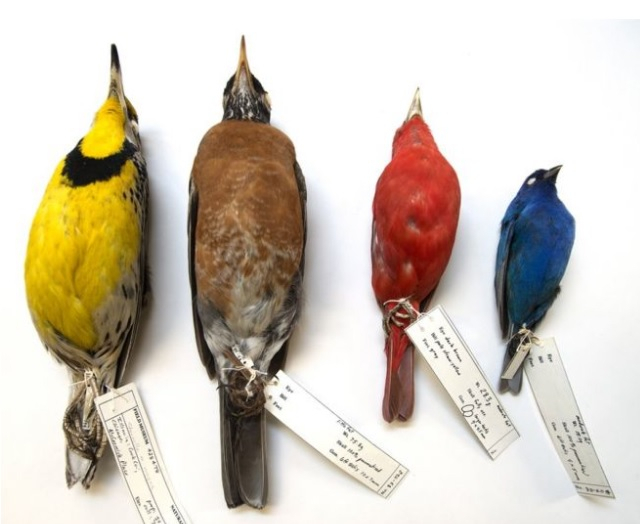A new study, published in the journal Ecology Letters, has claimed that birds are shrinking and their wingspans are growing due to climate crisis. The researchers from the University of Michigan and the Field Museum in Chicago analyzed 70,716 specimens from 52 North American migratory bird species, which had died after colliding with buildings in Chicago, collected over a period of 40 years.

These species include birds such as thrushes, sparrows, warblers and several other varieties. According to the researchers, the findings of this latest study are extremely important to understand how animals, including humans will adapt to climate change.
Shocking consistency in response
Brian Weeks, an assistant professor at the school for environment and sustainability at the University of Michigan, said: "We found almost all of the species were getting smaller. The species were pretty diverse, but responding in a similar way."
Weeks said that they were shocked to see the consistency in terms of response. Most of the studies on animal responses usually focus on the shifts in timing of life events, such as birth or migration, and on geographical range. But the experts were surprised to find that this particular research suggests body morphology that gives me a third crucial aspect in such cases. "That's one major implication. It's hard to understand how species will adapt without taking all three of these things into consideration," Weeks, the lead author of the study, said.

Ability to survive migration
The researchers observed that the length of the birds' lower leg bone, which is a common measure of the body size, has shortened by 2.4% over a time span from 1978 to 2016. However, the wings of the birds have lengthened by 1.3% suggesting that warm temperatures caused the increase in wing length of the birds, which in turn decreased the body size.
This means that the birds with smaller body sizes will have less energy to complete long journeys. "Migration is an incredibly taxing thing they do," Weeks said, adding that the birds which had longer wingspans were most likely to survive migration. In such cases, the smaller bodies were compensated by their wings.
However, the researchers are not sure about the exact reason for which the birds are shrinking in warmer temperatures. One theory suggests that the smaller birds lose body heat faster than larger animals because of their larger surface-area-to-volume ratios. It remains to be seen whether they will extrapolate the findings to animals, including humans, in the future.









